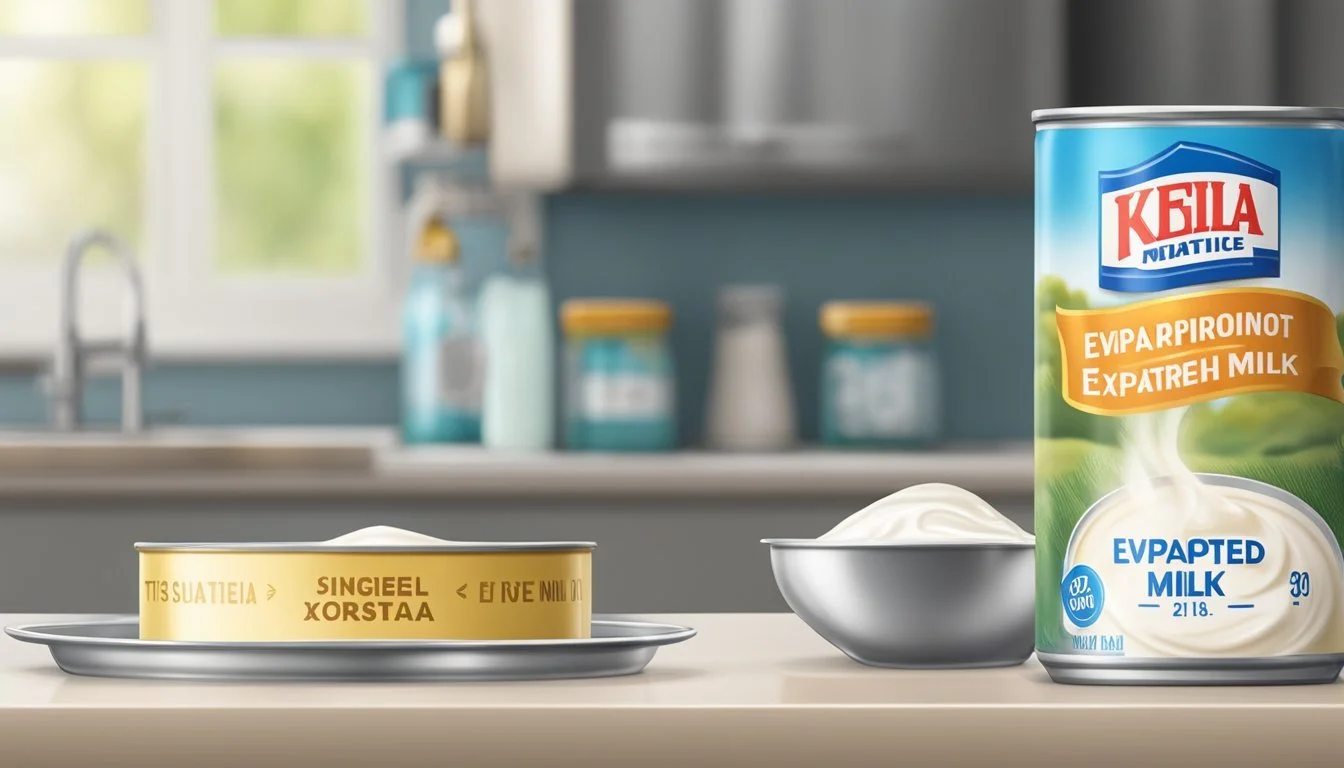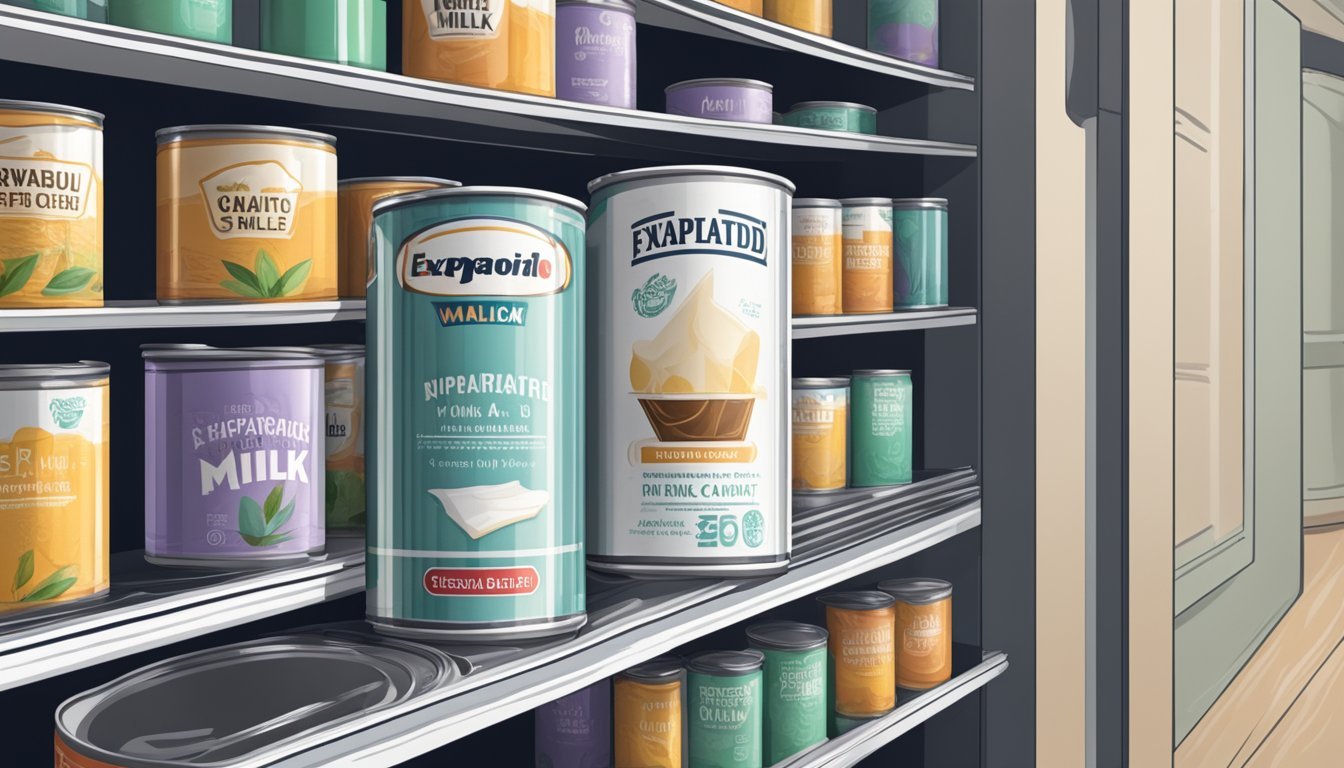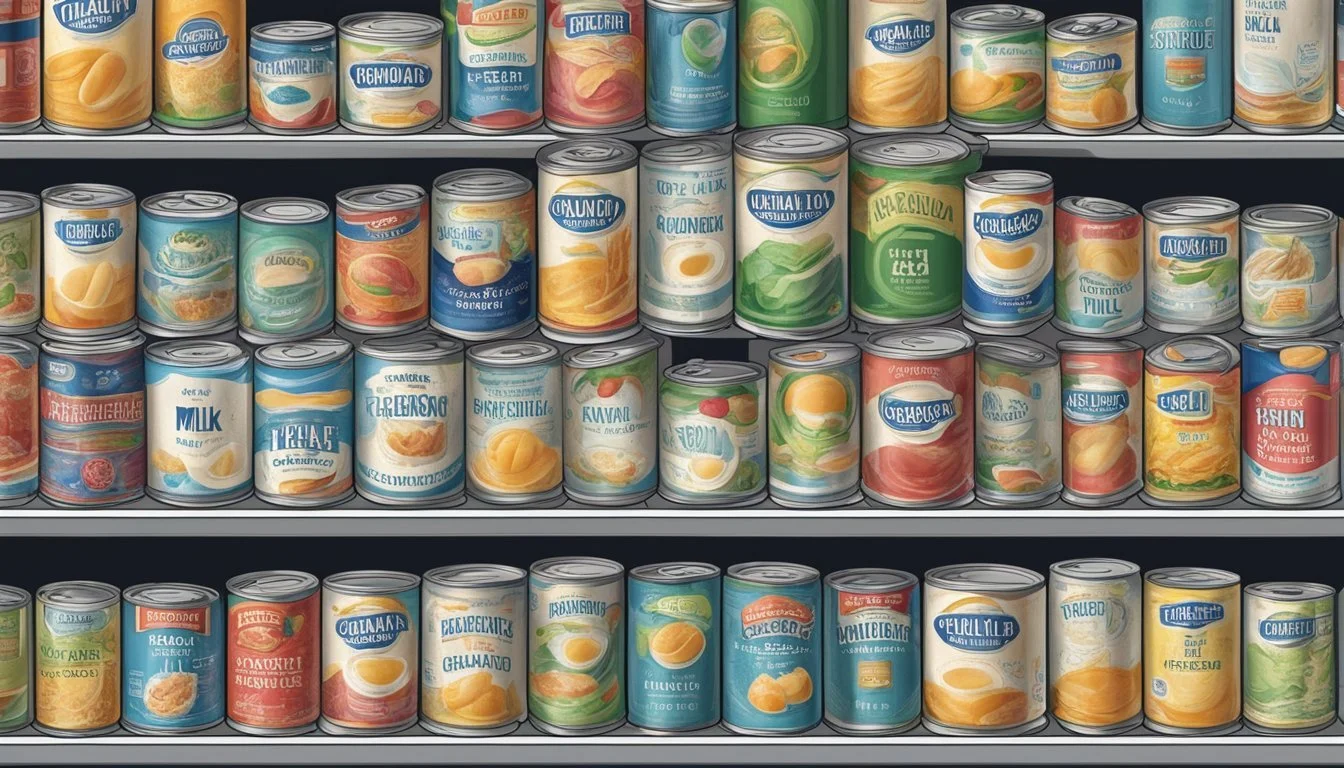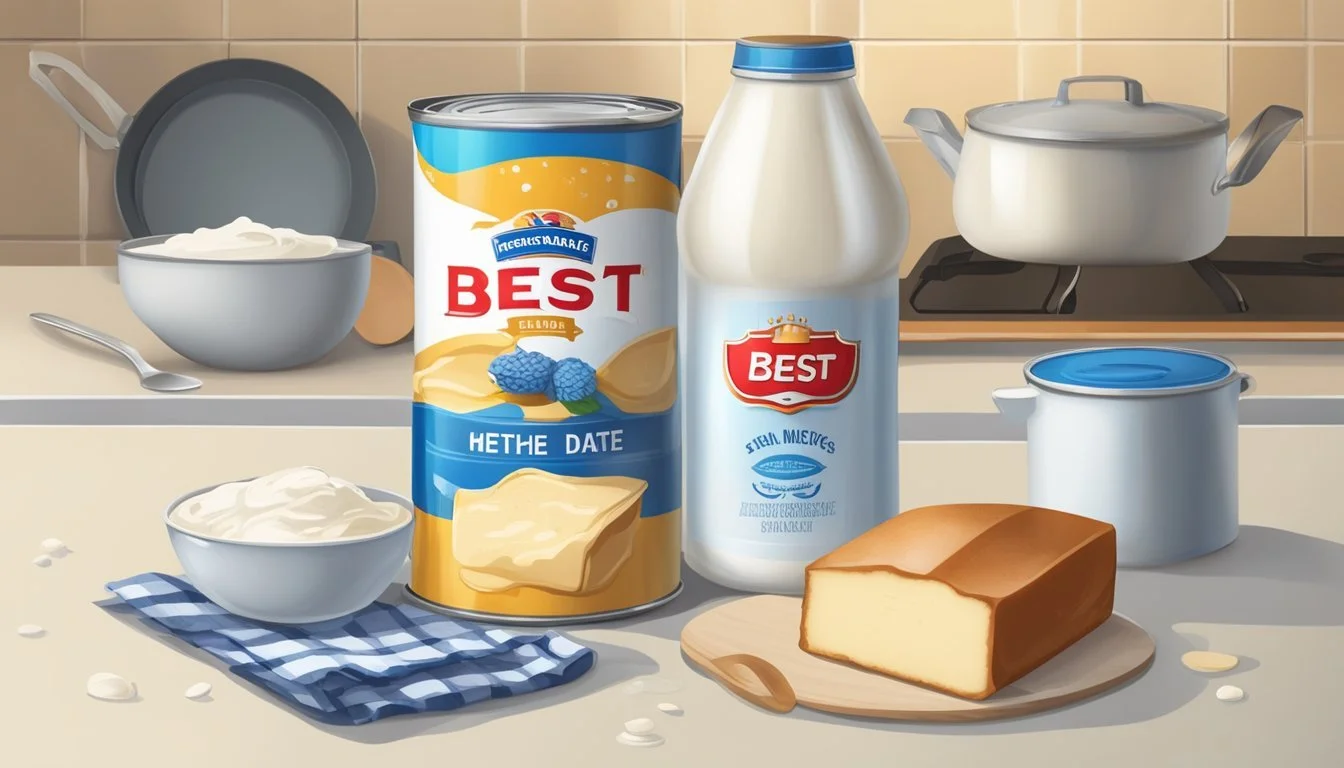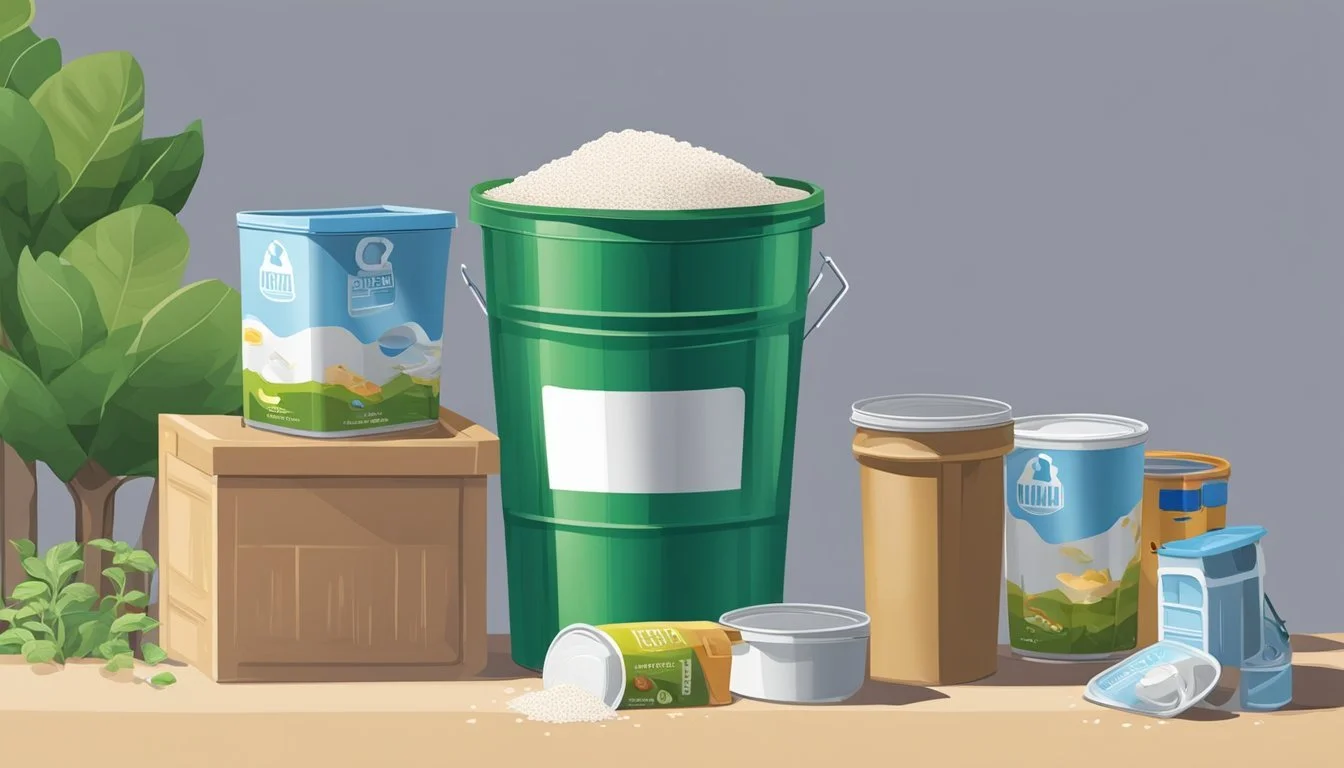Does Evaporated Milk Go Bad?
Storage Tips and Shelf Life
Evaporated milk, like all dairy products, will go bad over time. Unopened cans of evaporated milk can remain fresh and usable for up to 12 months when stored in a cool, dry place. Even past its best-by date, it might be good for another 2-3 months, but it's crucial to ensure it remains properly stored away from heat and moisture.
Once a can of evaporated milk is opened, it has a much shorter lifespan. It should be consumed within 5 days if kept in the refrigerator to avoid any health risks. If there are leftovers, freezing can help extend its usability, though it's essential to store it in an airtight container to maintain its quality.
Identifying spoiled evaporated milk can be tricky. Changes in color, texture, or smell can indicate spoilage. Even if it looks fine, it's better to err on the side of caution if it's been stored longer than recommended. Practicing good storage habits and hygiene can help minimize the risk of consuming spoiled dairy products.
Understanding Evaporated Milk
Evaporated milk is a dairy product known for its extended shelf life and concentrated composition. Key differences between evaporated milk and other milk varieties involve production methods and water content.
Production and Composition
Evaporated milk is made by slowly heating regular milk to remove around 60% of its water content. This process results in a concentrated milk with a thicker and creamier texture. Sterilization is then employed, typically involving high-heat treatment, which ensures the product remains shelf-stable and safe to consume.
The composition of evaporated milk includes various nutrients like proteins, fats, and carbohydrates, similar to regular milk but in higher concentrations. Additionally, it is packed in cans to further extend its shelf life, allowing for storage up to a year or more if unopened.
Differences from Other Milk Varieties
Evaporated milk differs significantly from other milk types due to its reduced water content and sterilization process. Unlike regular milk, which is fresh and perishable, evaporated milk can be stored for much longer without refrigeration.
Compared to sweetened condensed milk, evaporated milk is unsweetened, making it a versatile ingredient in both savory and sweet dishes. Dry milk (or powdered milk) is another different variety, created by evaporating all water content, resulting in a powder form that requires rehydration before use. This high concentration of nutrients and different forms contribute to the unique uses and advantages of evaporated milk.
Proper Storage of Evaporated Milk
When storing evaporated milk, it is crucial to follow specific guidelines to maximize its shelf life and ensure safety. Depending on whether the can is opened or unopened, and considering freezing as an option, different methods should be used.
Before Opening
Unopened cans of evaporated milk are shelf-stable and should be stored in a cool, dry pantry. Keeping the cans at room temperature and away from direct light is important. Refrigeration is not necessary for unopened cans. Proper storage conditions allow the milk to remain good for 12 to 18 months past the date of manufacture. Placing the cans in the back of a cupboard or pantry will ensure a stable temperature and minimal light exposure.
After Opening
Once opened, evaporated milk should be transferred to an airtight container to maintain its freshness. Covering the container with plastic film can help create a secure seal. It is essential to refrigerate the milk immediately after opening. Consumed within 5 days, it reduces the risk of spoilage and foodborne illnesses. Labeling the container with the date of opening can help keep track of its use-by date.
Freezing Options
Evaporated milk can be frozen to extend its shelf life after opening. Pour the leftover milk into an airtight container or use an ice cube tray to create milk cubes. Leave a half-inch of headspace for expansion if using containers. Once frozen, the milk can be stored in freezer bags for easy access. Proper freezing can help preserve the milk for an additional 2 to 3 months. Thawing should be done in the refrigerator, not at room temperature, to maintain safety.
Shelf Life and Expiration
Evaporated milk has a surprisingly long shelf life, which varies based on whether the can is opened or unopened. While unopened evaporated milk can last for months beyond its best-by date, opened evaporated milk has a much shorter safe consumption period.
Shelf Life of Unopened Cans
Unopened cans of evaporated milk can remain safe for consumption for up to 12 months past their best-by date, if stored properly in a pantry or cupboard. The high-temperature processing and canning methods used significantly extend its shelf life compared to fresh milk.
This long shelf life hinges on the integrity of the can and the storage conditions. Cans should be kept in a cool, dry place to maintain quality.
Storage Tips:
Store in a pantry or cupboard.
Keep away from direct sunlight.
Avoid exposing to extreme temperatures.
Shelf Life of Opened Evaporated Milk
Once opened, evaporated milk must be refrigerated and consumed within 3 to 5 days to maintain optimal safety and quality. The milk should be transferred to an airtight container to minimize exposure to air and contaminants.
Using a marker to label the container with the opening date can help in keeping track of its freshness. Freezing opened evaporated milk is a viable option for extending its usability, but it may affect the texture.
Storage Tips:
Refrigerate immediately after opening.
Use airtight containers.
Label with the date of opening.
Expiration and Safety Considerations
Despite its lengthy shelf life, it's crucial to pay attention to the expiration date and signs of spoilage. Evaporated milk past its expiration date may still be safe if the can is intact and it doesn't exhibit spoilage signs, such as sour odor or off taste.
Consuming spoiled evaporated milk can pose health risks including food poisoning. Always look out for changes in smell, texture, or color before using past-date evaporated milk.
Signs of Spoilage:
Sour or unpleasant odor.
Off taste.
Changes in color or texture.
Safety Tips:
Avoid tasting if it smells off.
Discard if the can is damaged or swollen.
Practice good hygiene when handling opened cans.
Identifying Spoilage
Detecting the spoilage of evaporated milk involves examining its appearance, smell, and texture. Each of these factors helps determine if the milk is still safe to consume.
Visual Indicators
The appearance of spoiled evaporated milk changes noticeably. Discoloration is one of the first signs; fresh evaporated milk should have a creamy white to light beige color. Any deviation, such as yellowing or darkening, suggests spoilage.
Lumps and curdling indicate that the milk has gone bad. These physical changes are often accompanied by the formation of mold, which appears as dark or green spots. Additionally, a milk skin may form when the proteins coagulate, further indicating spoilage. It's crucial to discard the milk if any of these signs are present.
Olfactory and Taste Assessment
Spoiled evaporated milk has an unmistakably sour or unpleasant odor. This is a strong indicator that harmful bacteria may be present. Fresh evaporated milk has a mildly sweet scent, so any off-smell is a sign that the milk should not be consumed.
Tasting a small amount can also provide clues. Good evaporated milk has a rich, slightly sweet flavor. Sourness or bitterness indicates spoilage. It's recommended to taste only a small amount if you're unsure, as spoiled milk can cause foodborne illnesses. Always trust your senses; if the milk does not smell or taste right, it's better to err on the side of caution.
Texture and Consistency
The texture of evaporated milk changes significantly when it spoils. Fresh evaporated milk is smooth and homogenous. When spoiling, it often becomes watery or overly thick. This shift in consistency can be felt when pouring or mixing the milk.
Lumpy texture or curdling is a definitive sign that the evaporated milk is no longer safe to use. These changes occur due to bacterial activity and protein breakdown. Checking the texture before using evaporated milk in recipes can prevent potential health risks and ensure the milk is still in good condition.
Detecting spoilage in evaporated milk is straightforward if you know what to look for. Paying attention to these visual, olfactory, and textural cues can help you avoid using spoiled milk and prevent possible health issues.
Usage in Cooking and Baking
Evaporated milk can enhance the texture and flavor of various dishes without the extra water content found in regular milk. It is a versatile ingredient in both cooking and baking.
Substitutes and Alternatives
Evaporated milk serves as an excellent substitute for heavy cream in many recipes. It provides a creamy texture without the high fat content.
Regular milk can also replace evaporated milk, but it may not offer the same richness. For those who are lactose intolerant or prefer non-dairy options, plant-based milks like almond or soy milk can be reduced through heating to mimic evaporated milk's consistency.
Powdered milk mixed with less water can also work. It's useful in soups, sauces, and desserts, providing a creamy base without the need for cream.
Culinary Applications
In soups and sauces, evaporated milk adds a smooth, rich texture. It can be used in recipes like cream of mushroom soup and alfredo sauce to replace heavy cream.
In baking, it helps create a moist and tender crumb in cakes and cookies. It enhances the richness of desserts like pumpkin pie and rice pudding.
Evaporated milk can enrich the flavor of smoothies and coffee, giving a slight caramel note. It's also an effective thickener for chowders and enhances the creaminess of various cooked dishes.
Used in leftovers, it can revive the texture and flavor of previously prepared meals. This versatile ingredient complements many recipes, making it a staple in both sweet and savory dishes.
Tips for Reducing Waste
Efficiently using evaporated milk can help minimize waste. Proper storage and creative ways to reuse leftover evaporated milk are essential.
Storing Leftover Evaporated Milk
To extend the life of leftover evaporated milk, refrigeration in an airtight container is necessary.
Pour the milk into a clean, airtight container and store it in the refrigerator. It will stay good for up to a week. For longer storage, freezing evaporated milk is a viable option. Use freezer bags or ice cube trays to freeze portions. This method ensures easy use in small amounts later. Label containers with the date to keep track of freshness.
Creative Reuse in Recipes
Leftover evaporated milk is versatile in the kitchen. It can enhance a variety of dishes, reducing waste.
In baking, it can replace some of the water or milk in recipes, adding richness. Use it in smoothies to add creaminess without extra fat. In cooking, it works well in soups, sauces, and casseroles, providing a creamy texture.
Another idea is to mix it into coffee or tea, adding a smooth, rich flavor. This approach ensures that all leftover milk is efficiently used, contributing to waste reduction.
Comparing Evaporated Milk Varieties
Evaporated milk varieties differ in flavor and nutritional content. These differences can influence the choice depending on the culinary use or dietary needs.
Flavor Variations
Evaporated milk has a richer and slightly caramelized flavor compared to regular milk. This distinct taste comes from the process of removing water through slow heating. Producers like Carnation offer varieties with slight differences in taste.
Sweetened condensed milk, a different product often confused with evaporated milk, contains added sugar, giving it a much sweeter taste. Evaporated milk does not contain added sugar, which makes it more versatile for both savory and sweet dishes.
The packaging, whether in a can or carton, does not significantly affect the flavor, although the level of freshness may vary slightly depending on storage conditions.
Nutritional Differences
Evaporated milk retains much of the nutritional content of whole milk but in a more concentrated form. This means higher levels of proteins and vitamins per volume compared to regular milk.
Sweetened condensed milk has a different nutritional profile due to its high sugar content. It provides more calories per serving and is higher in carbohydrates.
Some producers fortify evaporated milk with additional vitamins, such as vitamin D, to enhance its nutritional value. This makes it a good alternative to fresh milk in situations where refrigeration is not available or to extend the shelf life.
When comparing different brands or types, it's important to check the nutritional labels for detailed information, particularly if the product is fortified or has added ingredients.

